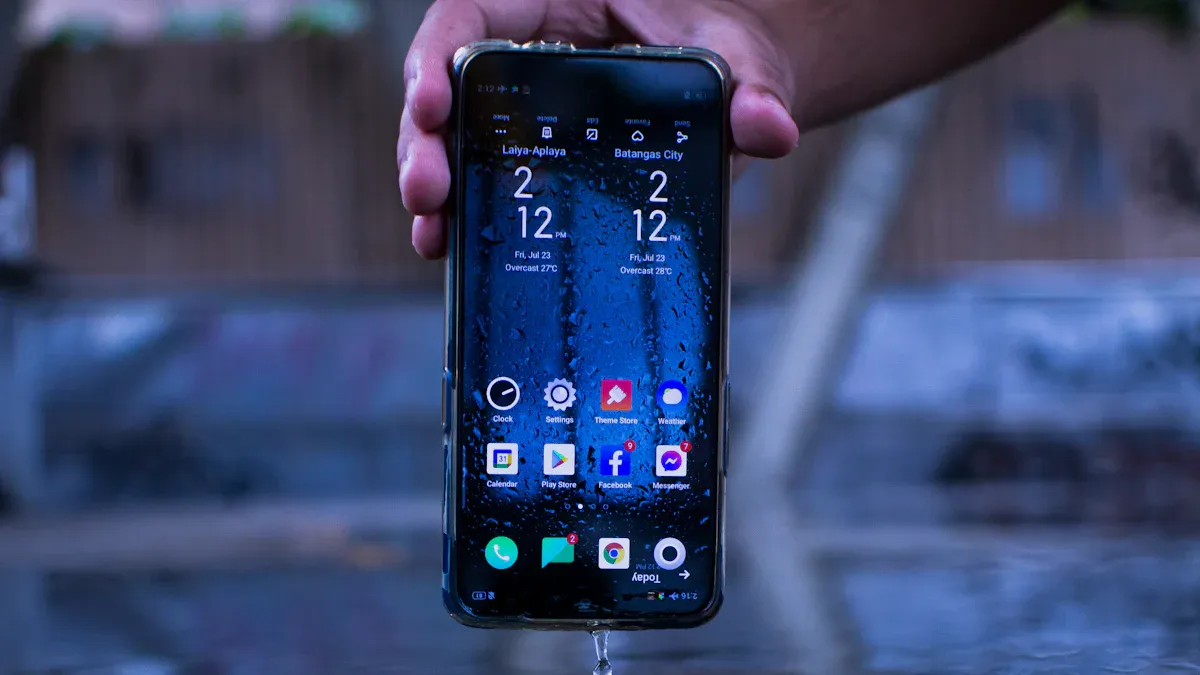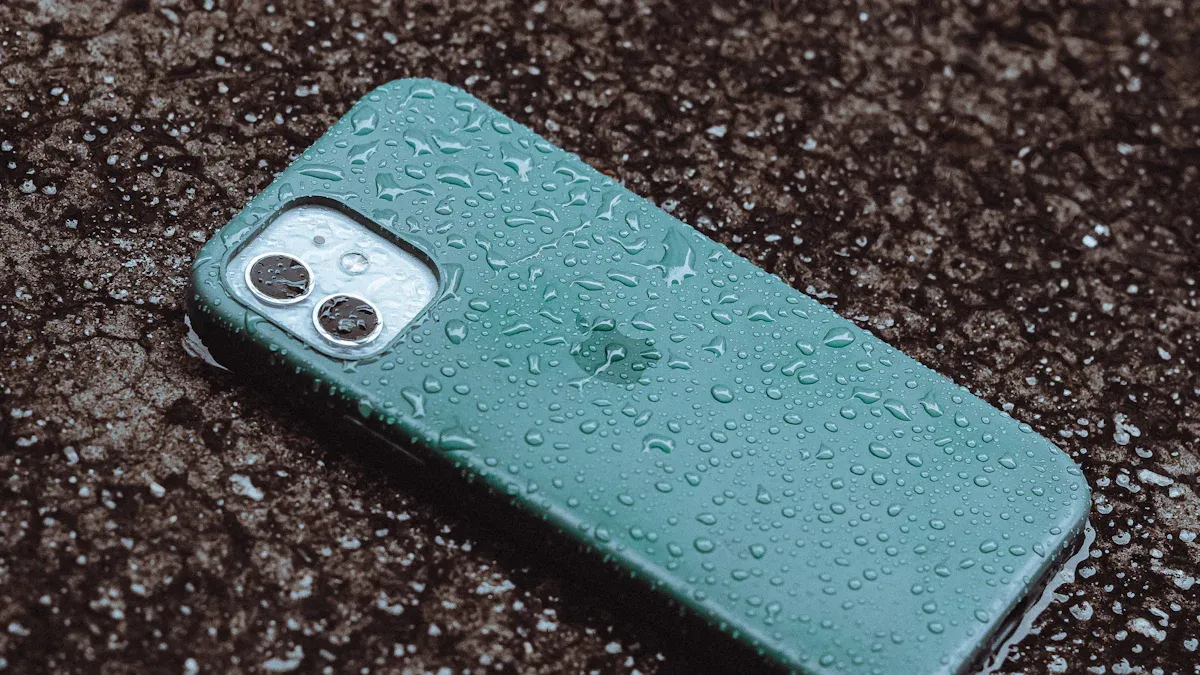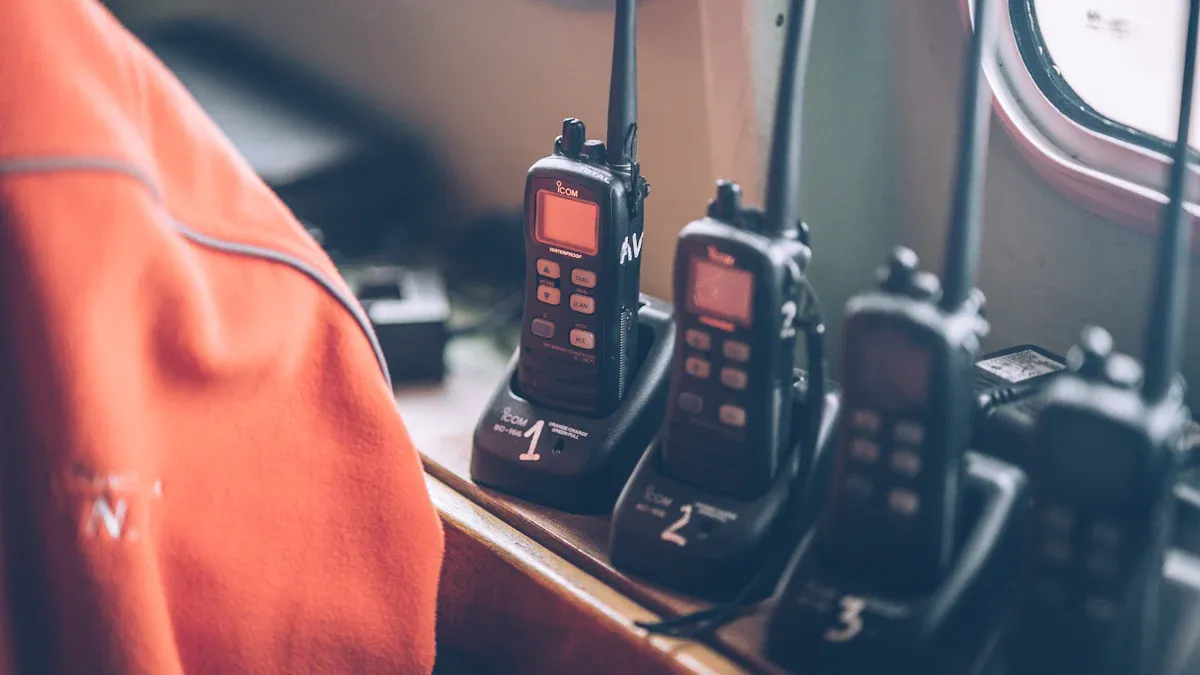
Offshore teams rely on the offshore waterproof telephone to withstand storms, saltwater, and high winds.
- Remoteness often creates connectivity issues, making standard devices unreliable.
- Outdoor waterproof telephone models, such as the IP waterproof telephone or the IP67 waterproof telephone, help maintain communication in emergencies and noisy environments.
Key Advantages of Offshore Waterproof Telephone Use

Enhanced Durability in Offshore Environments
Offshore work exposes equipment to saltwater, high winds, and constant moisture. Offshore waterproof telephones use advanced materials and smart design to survive these tough conditions.
- Corrosion-resistant die-cast aluminum alloy and cast aluminum enclosures protect the device from rust and physical damage.
- Silicon keypads keep out water and dust, making the phone reliable even in storms.
- Weatherproof cases with IP66 to IP68 ratings block dust and moisture from entering the device.
- Outer metal shells and airtight seals help the phone last longer, even when exposed to heavy rain or extreme temperatures.
- Some models include rotation mounting doors for extra weather protection.
Note: These features ensure that offshore waterproof telephones continue to work even after long exposure to harsh marine environments.
Durability tests show that these phones outperform regular models in water resistance. For example, phones with IP68 ratings can survive being underwater for over 30 minutes, while standard phones often fail quickly in wet conditions. However, waterproof models may be more vulnerable to physical drops than some non-waterproof phones, so careful handling remains important.
Improved Safety for Offshore Teams
Safety is a top priority in offshore operations. Offshore waterproof telephones help teams stay safe by providing reliable communication during emergencies.
- Devices often include distress signal keys and loudspeakers, allowing workers to call for help quickly.
- Enhanced noise cancellation technology ensures clear calls, even in noisy environments.
- User-friendly interfaces make it easy for anyone to use the phone, even while wearing gloves.
When storms or accidents happen, these phones keep teams connected. Reliable communication can mean faster response times and better outcomes during emergencies.
Reliable Communication in Harsh Conditions
Offshore waterproof telephones maintain strong performance even during extreme weather events.
- Their corrosion-resistant and waterproof construction keeps them working in saltwater, high humidity, and heavy rain.
- Advanced technology ensures clear and reliable calls, even when the weather turns bad.
- Rugged designs allow installation on offshore platforms, ships, and other marine sites.
Tip: Offshore waterproof telephones support both routine operations and emergency situations, helping teams stay in touch no matter the conditions.
These phones help prevent communication breakdowns, which can lead to costly mistakes or safety risks.
Reduced Maintenance Needs
Offshore waterproof telephones require less maintenance than standard phones in harsh environments.
- Durable aluminum alloy construction reduces the need for frequent repairs.
- IP67 or higher ratings protect against dust and water, lowering the risk of environmental damage.
- Spare parts are easy to find, and features like glove-compatible buttons make upkeep simple.
- Devices operate reliably across extreme temperatures, from -40°C to +70°C.
| Feature | Benefit |
|---|---|
| Corrosion-resistant materials | Fewer repairs needed |
| High IP rating | Less environmental wear and tear |
| Easy-to-replace parts | Lower repair costs |
| Energy-efficient design | Reduced power consumption |
Long-term, these features lead to cost savings. Fewer breakdowns mean less downtime and lower replacement costs. Offshore teams can trust these phones to work when needed, without constant repairs.
Main Drawbacks of Offshore Waterproof Telephone Use
Higher Initial Cost
Offshore waterproof telephones require a larger investment than standard telephones. The advanced materials and rugged design increase the price. Many offshore models use satellite technology, which adds to the cost. The table below shows the difference in initial purchase costs:
| Phone Type | Initial Purchase Cost Range (USD) |
|---|---|
| Offshore Waterproof Phones (Satellite Phones) | $500 (refurbished) to $2000 (new) |
| Standard Telephones (IP Phones) | $50 to $416 |
This price gap means companies must budget more for each offshore waterproof telephone. The higher upfront cost can be a barrier for smaller operations or those with limited budgets.
Technical Limitations and Connectivity
Offshore waterproof telephones offer strong performance in harsh environments, but they have technical limits. Many models use SIP/VoIP technology and connect to local fiber or Ethernet networks. These phones provide clear, low-latency calls and support remote management. However, they depend on the quality and reach of the local network. If the network fails, communication can break down.
Satellite phones, which some offshore waterproof models use, provide global coverage and work in remote areas. They need a clear line of sight to satellites. Bad weather, tall structures, or rough terrain can block the signal. Satellite phones also have longer delays in voice transmission compared to VoIP phones. Each technology has trade-offs. VoIP phones work best within offshore installations, while satellite phones cover wider areas but may suffer from signal issues.
Note: Teams must choose the right technology based on their location and network setup.
Maintenance and Repair Challenges
Maintaining offshore waterproof telephones can be difficult. The harsh marine environment causes wear and tear. Common issues include:
- Seals and gaskets wearing out, which can let water in.
- Corrosion from saltwater exposure.
- Damage from harsh chemicals or rough cleaning.
- Physical stress from improper installation or handling.
- Device failure from using unapproved parts or accessories.
Regular inspections help spot problems early. Teams should check for loose screws, worn seals, cracks, and corrosion. Cleaning should use mild, non-abrasive materials. Applying anti-corrosion coatings protects metal parts. Proper installation reduces physical stress. Using only approved parts and following manufacturer guidelines extends the device’s life. For serious problems like internal wiring damage, professional repairs are best.
Compatibility with Existing Systems
Integrating offshore waterproof telephones with current offshore communication systems can be complex. Offshore sites face extreme conditions, such as saltwater corrosion, high humidity, and strong winds. These phones must meet strict maritime and industrial standards, including IMO, ISO, and OSHA.
Compatibility challenges include:
- Connecting with existing PBX and VoIP networks.
- Supporting multiple networks like cellular, Wi-Fi, CBRS, and satellite.
- Managing limited spectrum to avoid interference.
- Protecting data with secure transmission technologies.
- Adapting to dynamic network changes and emergency response systems.
Hybrid environments, such as oil rigs, need devices that work with both maritime and industrial systems. Security and reliable integration are key for smooth operation.
Practical Considerations for Offshore Waterproof Telephone Selection

Choosing the Right Offshore Waterproof Telephone Model
Selecting the best offshore waterproof telephone starts with understanding the work environment. Teams should look for models with high waterproof ratings, such as IP66 or IP67, to protect against water and dust. Explosion-proof certifications help keep workers safe in hazardous areas. Heavy-duty aluminum alloy cases add durability. Emergency SOS functions support critical communication needs.
Key criteria include:
- Waterproof and dustproof ratings (IP66, IP67)
- Explosion-proof certification for hazardous zones
- Rugged industrial design with corrosion-resistant materials
- Emergency call features
| Criteria | MAT (Marine Auto Telephone) | CBT (Common Battery Telephone) | SPT (Sound Powered Telephone) |
|---|---|---|---|
| Power Source | Ship’s power/UPS | Central DC supply | No external power needed |
| Key Advantage | Feature-rich | Robust, simple | Operates without power |
| Key Disadvantage | Power dependent | Fewer features | Lower volume |
| Primary Use | Routine operations | Smaller vessels | Emergency/backup |
| Intrinsic Safety | Explosion-proof models | Explosion-proof models | Intrinsically safe |
Training and Support for Offshore Teams
Proper training ensures teams use the offshore waterproof telephone correctly. Crew members should learn how to operate emergency features and maintain the device. Regular drills help everyone respond quickly during real emergencies. Support from manufacturers, such as manuals and technical help, keeps the system running smoothly.
Tip: Schedule routine training sessions and equipment checks to maintain readiness.
Cost-Benefit Analysis for Offshore Operations
Companies must balance the higher upfront cost of these telephones with long-term benefits. Offshore regulations require at least two watertight or waterproof telephones with internal batteries for safety. These rules ensure redundancy and reliability. Certified devices with CE, FCC, and ISO9001:2015 marks meet strict safety and quality standards. Over time, fewer repairs and less downtime can offset the initial investment.
Offshore teams report several benefits after adopting an offshore waterproof telephone:
- Reliable communication in remote locations
- Enhanced crew safety with emergency features
- Durable design that resists harsh weather
- Improved coordination between offshore and onshore teams
Teams should weigh these strengths against higher costs and technical limits before making a decision.
FAQ
What does the IP rating mean on offshore waterproof telephones?
The IP rating shows how well the phone resists dust and water. Higher numbers mean better protection. For example, IP67 means the phone can survive underwater for 30 minutes.
Can offshore waterproof telephones work with standard office systems?
Most models connect to PBX or VoIP networks. Some require adapters. Always check compatibility with current systems before buying.
How often should teams inspect offshore waterproof telephones?
- Teams should inspect devices every month.
- Look for signs of corrosion, worn seals, or loose parts.
- Regular checks help prevent failures during emergencies.


